click here to check out photos from past Douglass river trips.
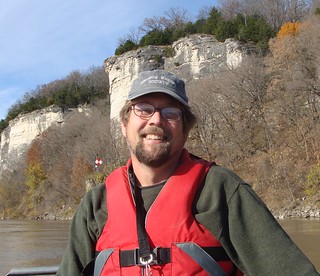 | |
| John Reid at the Manitou Bluffs |
John works at Douglass High School in Columbia.
He started a “Service Club” at Douglass, where he creates opportunities for his students to work with local nonprofits, and to generally get out in the community and make it better through creek clean-ups, community gardening and ecosystem restoration projects. Four years ago, it was the Service Club that hopped on our boats after class for a quick river tour.
Among other subjects, John teaches Environmental Science. So a couple of years ago we started taking some of his Environmental Science students out on the river in the morning, and the Service Club in the afternoon, during school hours.
We get to work with the students that want to come, and put forth the extra effort to make the trip. John makes it easy for them, and everyone gets a pair of mud boots so they have no excuse not to get out of the boat and check things out.
 |
| The Morning Crew - Environmental Science Class |
After they got their safety talk (interspersed with comments like “What! I’m not going to be in a boat with no fish that big jumping in!”), though, they all eagerly hopped on the boat. It was obvious that, even with all the bluster, they completely trusted Mr. Reid. Half were lobbying for us to go fast with the other half shaking their heads.
The second group, from the Service Club, were a more adventurous lot from the start, used to Mr. Reid taking them outside of their comfort zones.
 |
| The Douglass High School Service Club cleans up the river. photo by Steve Schnarr |
We show them the recreated Tadpole Island, where the Army Corps of Engineers dug a new chute across the river from Huntsdale. Before the river was channelized there was an island there called Tadpole Island, and now it exists again, ringed with sandbars.
A bit further upstream is an eagle nest. In May, when our spring trip usually happens, the babies are beginning to stand up in the nest and test their wings. One of the parents sits in a tree nearby watching.
On our first trip this year, none of the kids aboard had seen a bald eagle before. They loved it and couldn’t believe the size of the nest. “Who made that nest for them?” “How did they make a nest so big?”.
We discuss the near collapse and latest success of the bald eagle. About how DDT nearly wiped them out, just because it made their eggs too fragile. And now you can find a bald eagle nest about every 10 or 15 miles on the Missouri River.
If we have time, we motor on upstream past the Manitou Bluffs to I-70. Most of the kids had been on this bridge on their way to Kansas City. They mention how the river seems so much closer from the bridge. We feel tiny in our boat motoring past bridge piers swirling in the current.
We shut off the motor and drift under the massive trusses, checking out the cliff swallow nests tucked underneath, little clay jugs stacked up like apartments. Tucked into the bluff just next to the bridge is a cave mouth swarming with swallows. It’s easy to talk about how those bluffs were where the swallows naturally would build their nests, but the bridges work fine too.
Drifting back downstream, we come to Lewis and Clark Cave. Previously called Torbett Spring, this cave is now tucked behind the Katy Trail, with its spring waterfall emerging from a railroad culvert dated 1904 and tumbling down rip rap into the river. Meriwether Lewis noted the cave in his journal, with little drawings to depict the Native American petroglyphs painted on the bluff above the cave.
We show the kids the remnants of the paintings that are left. “A “Nike Swoosh” with a dot above it,” is how Mr. Reid describes it, and the kids see it right away.
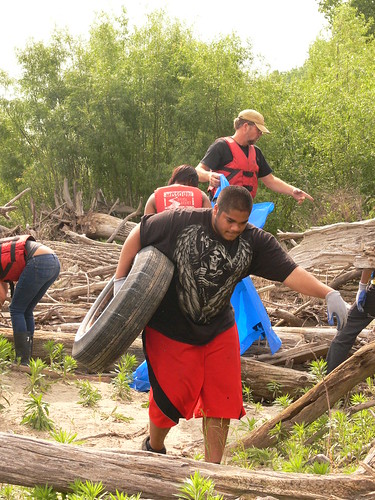 |
| Daniel drags a tire from the rack pile. |
If we have time, we explore the mouth of the cave (the interior of the cave is closed to the public to protect Indiana bat nurseries), but today we are running out of time. We need to move onto the clean-up.
Morning and afternoon groups each get a different beach. This year, after last year’s high water, we clean up areas where driftwood has collected on the high banks. Balls, tires, plastic bottles, toys…all the usual suspects are there. The kids fill bags quickly, and help each other carry them across the wood piles. At first they’re bummed that they get some mud on their pants, but that disappears immediately.
They’re amazed at the trash they find out there.
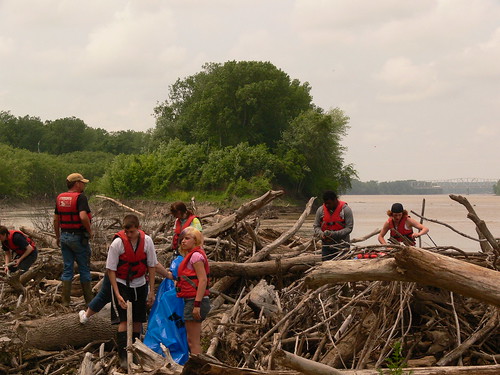 |
| Service Club scours the driftwood for trash. |
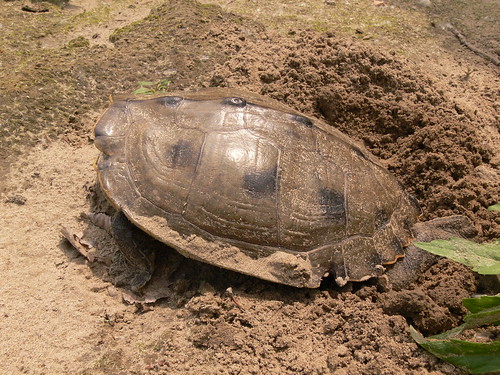 We saw a turtle laying eggs in the sand. A group of deer getting a
drink by the water. We stomped in quicksand. Buzzards flew overhead in a
cyclone.
We saw a turtle laying eggs in the sand. A group of deer getting a
drink by the water. We stomped in quicksand. Buzzards flew overhead in a
cyclone. Just another day on the river.
One group got two and a half hours…the other only two.
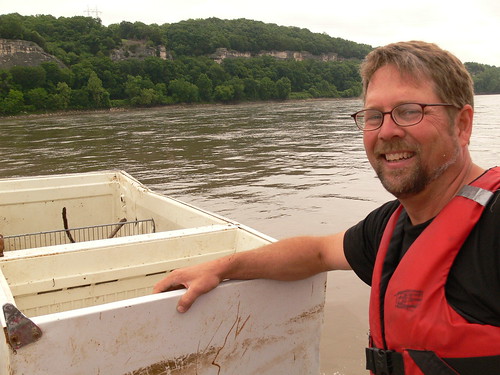 |
| Mr. Reid and his fridge. |
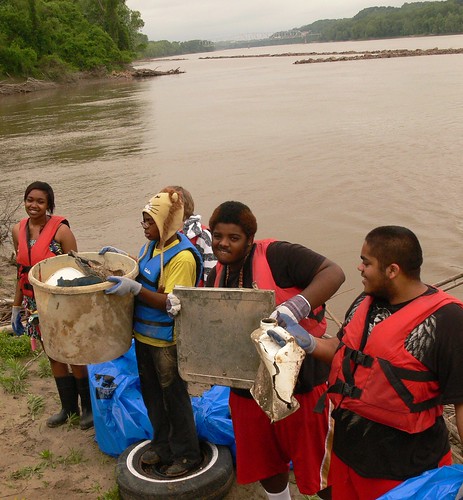 And by the time we got back to shore, they were old river pros. “We
saw eagles, Mr. Reid.” One student laughs at the mud on his friends
shoes. “What are you gonna tell people about all that mud on you?” “I’ll
tell ‘em I’ve been hanging on the Missouri River YO!”
And by the time we got back to shore, they were old river pros. “We
saw eagles, Mr. Reid.” One student laughs at the mud on his friends
shoes. “What are you gonna tell people about all that mud on you?” “I’ll
tell ‘em I’ve been hanging on the Missouri River YO!”This past winter we came up with a new award to give. To the teacher that really stepped up and helped us get kids on the river for a real experience. We decided to call it the “Floating Classroom Award” and we gave it to John Reid. In fact we were able to give it to him at our screening of the Wild & Scenic Film Festival in the Blue Note in Columbia.
Who will get the “Floating Classroom” this year?
